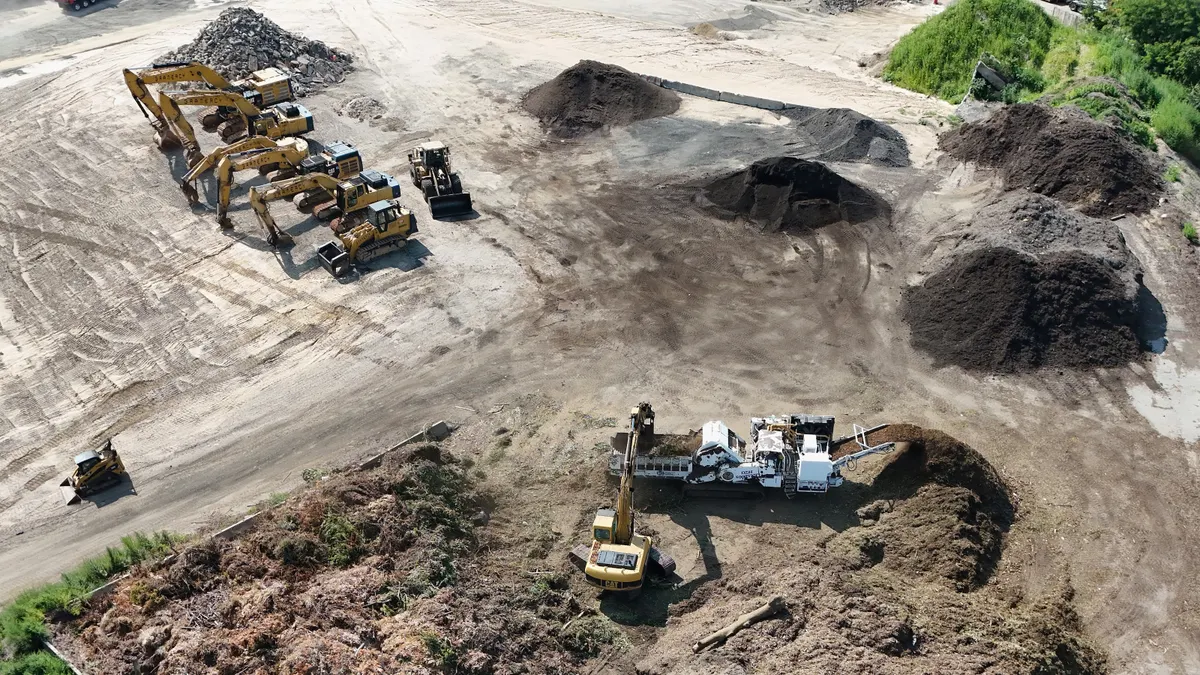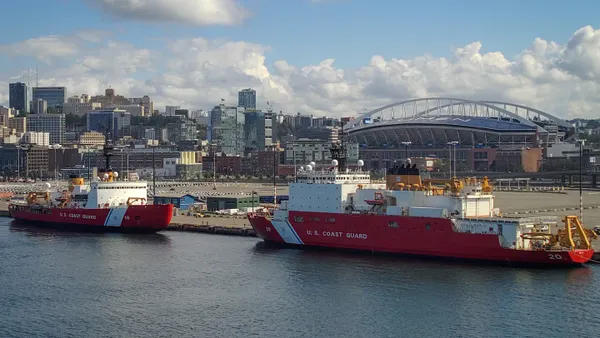Dive Brief:
- A 570,000-square-foot commercial office and laboratory project under construction by Webcor in Brisbane, California, is working to divert nearly all solid waste from landfills and incineration during construction — and has the paperwork to prove its commitment.
- Genesis Marina recently became the world's first jobsite to be pre-certified by the rigorous Total Resource Use and Efficiency (TRUE) program, according to a Webcor press release. In order to meet the requirements, 90% of a project's waste must be diverted from landfills and incinerators for a 12-month period, and the builder must also document waste data for that year, according to the program website.
- The project is breaking new ground as far as TRUE certification goes, since the program wasn't originally designed for construction sites, only finished projects. Denise Braun, principal at zero-waste consulting firm and project partner All About Waste, said in the release that the pre-certification was a "key first step" to becoming the first TRUE-certified construction site.
Dive Insight:
Soonrock Park, the senior project manager overseeing Genesis Marina for Webcor, said the goal of drastically reducing waste added another degree of difficulty. The project is also being built on top of a former landfill, which had the potential for hazardous materials and other debris to be uncovered during the construction process.
Project management planned to get to this 90% threshold first by working with its suppliers to cut as much recyclable material, such as plastic, out of the shipping process before it reaches the jobsite. Park estimated that the project's vendors would be able to nix about 20% of waste before it even reaches the jobsite, leaving 80% left for them to deal with.
Once the materials arrive at the jobsite, the rest of the waste is recycled, reused or disposed of.
Construction is a large generator of waste overall. According to the EPA, 600 million tons of construction waste and debris were generated in 2018, almost twice the amount of generated municipal waste. While 455 million tons of the material were sent to be reused, the other 145 million tons went directly to landfills.
"About 65% of all U.S. waste comes from construction and demolition debris, yet in California only 40% of that C&D debris is diverted from landfills," said Webcor Sustainability Director Jenelle Shapiro in the press release. "To put it in perspective, our one construction business, on average, generates 1,700 tons of C&D debris monthly."
Miranda Nowlen, Webcor's senior project engineer directly responsible for the TRUE certification process, felt fortunate that the jobsite was large enough to host the recycling stations as the project progressed. Nowlen compared the vast jobsite to one in San Francisco, for example, where they would have had to cram more structures into less space.
Park said that the 90% goal of waste reduction was ambitious and he "wasn't a big fan" at the beginning due to the time sink for himself and his engineers, but he eventually came around. He now turns thoughts of "what if we don't make it" into more positive notions.
Nowlen said that companies shouldn't be scared to take on waste-reduction challenges.
"I think even if we are any project, right, getting more than 75% waste diverted is awesome. It's a good start," Nowlen said.















